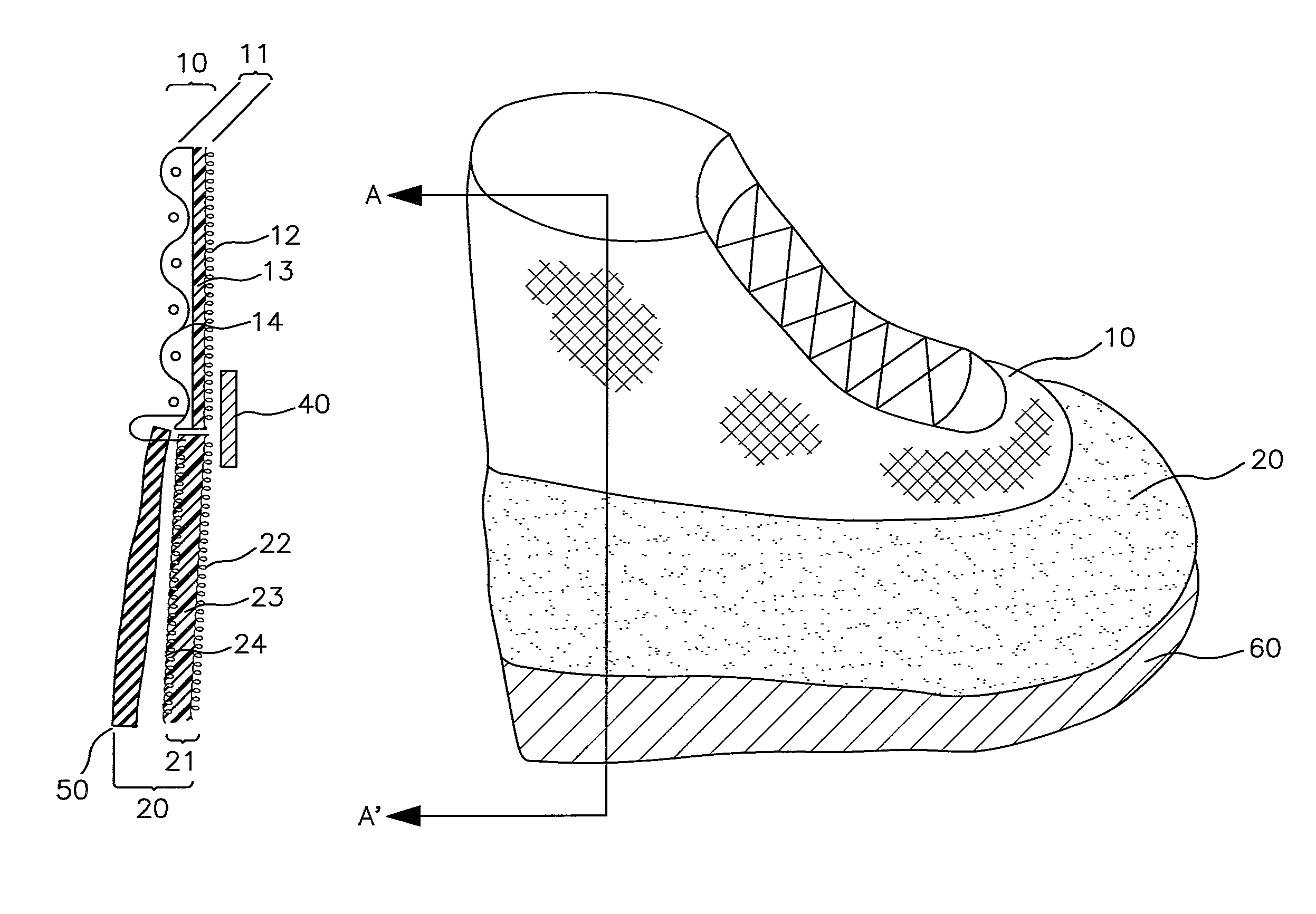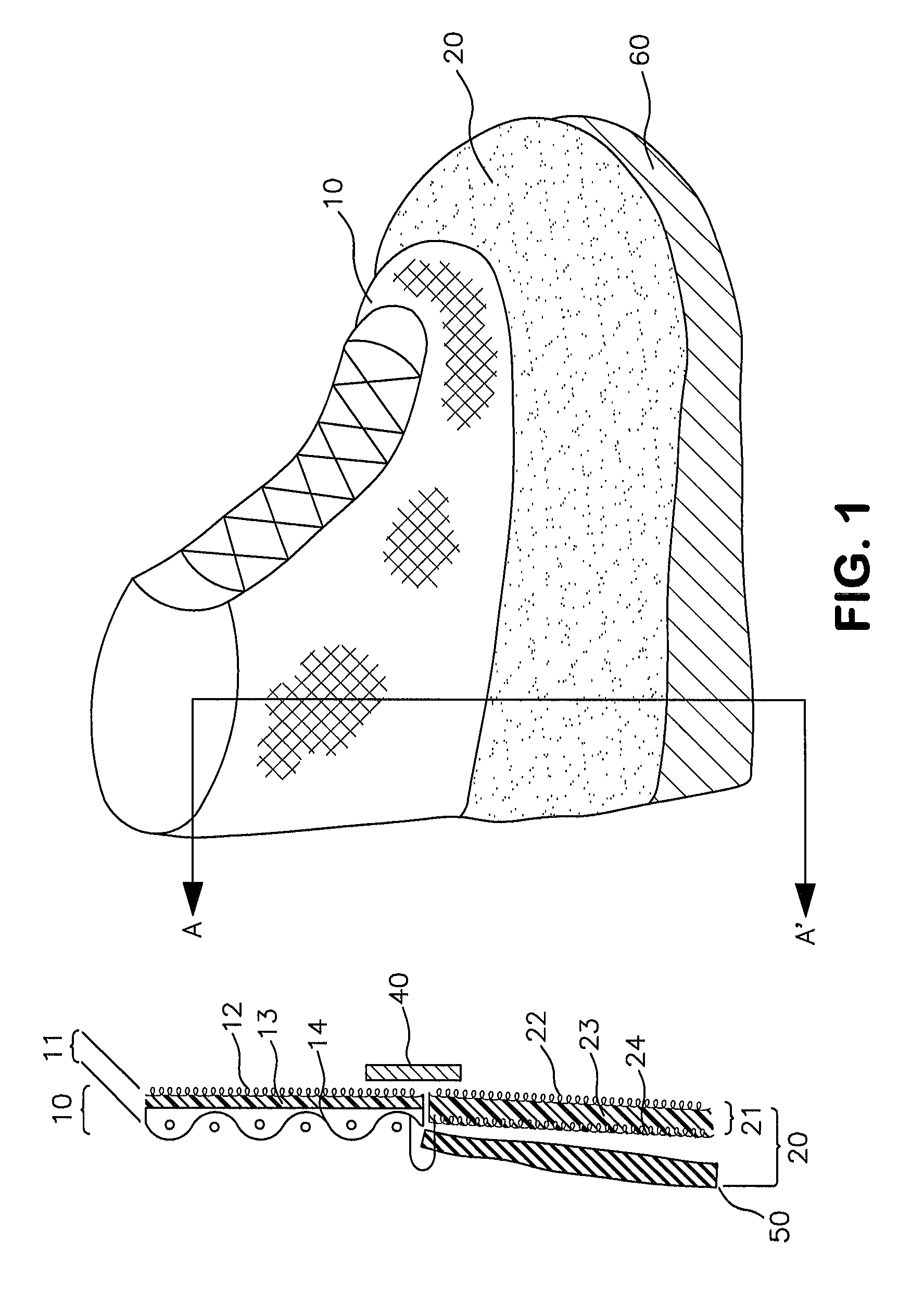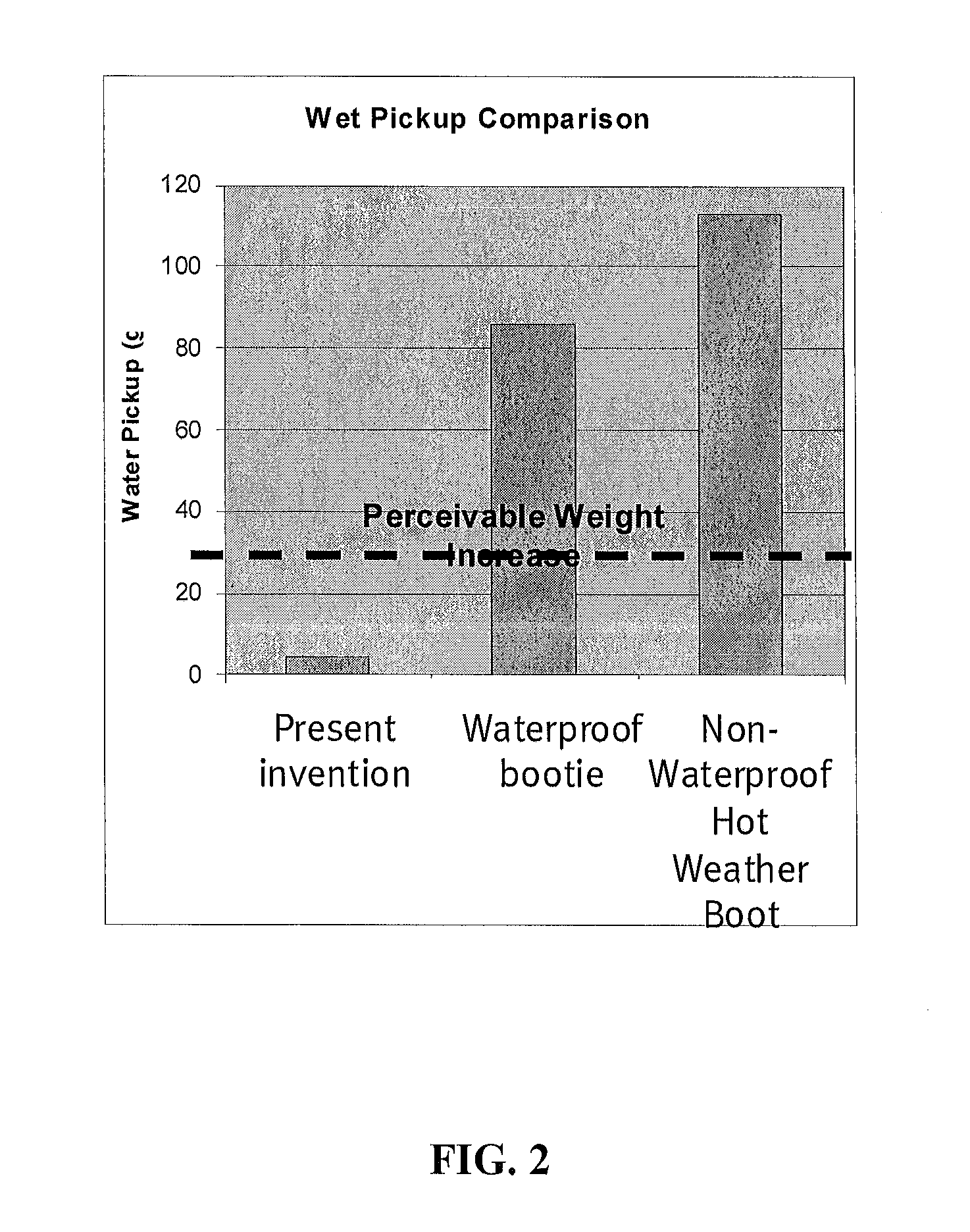Waterproof breathable footwear having hybrid upper construction
a technology of breathable footwear and hybrid upper, which is applied in the direction of uppers, insoles, bootlegs, etc., can solve the problems of footwear construction type, upper material losing its breathability, footwear uncomfortable for wearers, etc., and achieves greater abrasion resistance, less breathability, and greater breathability.
- Summary
- Abstract
- Description
- Claims
- Application Information
AI Technical Summary
Benefits of technology
Problems solved by technology
Method used
Image
Examples
example 1
[0054]A boot was made with an upper laminate material comprising an inferior compartment and a superior compartment. The laminate of the superior compartment is a three layer laminate having a) 8.8 oz. 1000D nylon weave b) expanded polytetrafluoroethylene membrane c) 6 oz hydrophilic nylon, texturized polyester knit, d) hot melt adhesive to hold the fabric together, available from Gore and Associates, Elkton, Md., Part Number EXQD102120AZ: EXQD102120AZ. The laminate of the inferior compartment is a three layer laminate having: a) 1.5 oz. nylon tricot knit b) expanded polytetrafluoroethylene membrane c) 6 oz hydrophilic nylon, texturized polyester knit, d) hot melt adhesive to hold the fabric together, available from Gore and Associates, Elkton, Md., Part Number EAAM120108AZ: EAAM120108AZ.
[0055]The laminates of both the superior compartment and inferior compartment were tested utilizing the MVTR test method described above. The laminate of the superior compartment had a MVTR of 1600 ...
example 2
[0061]A standard 8 inch boot manufactured in accordance with the present invention was subjected to the Wet-Pickup Test described above. Additionally, both a waterproof (trade name Belleville 790 available from Belleville Shoe Manufacturing Company, Belleville, Ill.) utilizing a standard bootie construction and non-waterproof (trade name Belleville DST105R available from Belleville Shoe Manufacturing Company, Belleville, Ill.) 8 inch boot were tested. The results are shown in FIG. 2.
[0062]As demonstrated in FIG. 2, the boots manufactured in accordance with the present invention picked up substantially less water than the boot manufactured with a waterproof bootie and the non-waterproof hot weather boot.
example 3
[0063]Four sets of five (20 total) standard eight inch boots manufactured in accordance with the present invention were subjected to the whole boot moisture vapor transmission test described above. Additionally, four sets of five (20 total) standard eight inch waterproof boots manufactured with a standard bootie construction (trade name Belleville 790 available from Belleville Shoe Manufacturing Company, Belleville, Ill.) were tested. Further, an additional four sets of five (20 total) standard eight inch waterproof boots manufactured with a standard bootie construction (trade name Bates ICB available from Wolverine Worldwide, Inc., Rockford, Mich.). The average of each of the sets was measured. The Results are listed below.
[0064]
BOOTWBMVTR Range (g / h)Inventive Boot 8.9-12.6Belleville7904.0-8.5Bates ICB4.0-8.5
[0065]As demonstrated in the above table, the boots manufactured in accordance with the present invention had average whole boot moisture vapor transmission test results higher...
PUM
| Property | Measurement | Unit |
|---|---|---|
| height | aaaaa | aaaaa |
| pore size | aaaaa | aaaaa |
| pore size | aaaaa | aaaaa |
Abstract
Description
Claims
Application Information
 Login to View More
Login to View More - R&D
- Intellectual Property
- Life Sciences
- Materials
- Tech Scout
- Unparalleled Data Quality
- Higher Quality Content
- 60% Fewer Hallucinations
Browse by: Latest US Patents, China's latest patents, Technical Efficacy Thesaurus, Application Domain, Technology Topic, Popular Technical Reports.
© 2025 PatSnap. All rights reserved.Legal|Privacy policy|Modern Slavery Act Transparency Statement|Sitemap|About US| Contact US: help@patsnap.com



